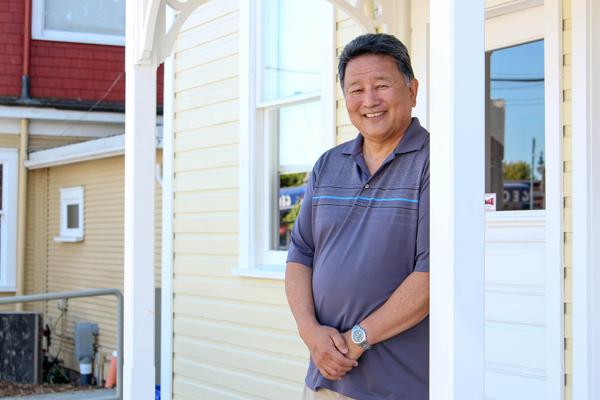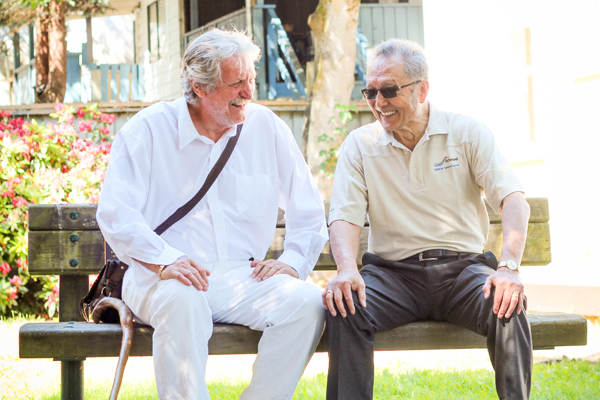Jim Kojima's life in Steveston had a lot to do with fish. His father was a fisherman, his mother worked at the local cannery; he worked summers for B.C. Packers and has fond memories of going fishing after school.
''We'd come home on the tram, get around to the wharf, get on our boats and go out across the river,'' recalled Kojima.
Many Japanese who grew up in Steveston in the 1950s had similar backgrounds as Kojima, with fisherman dads and cannery moms. They also shared the pain and displacement of Japanese internment during World War II. In 1942, Kojima's family was forced to a camp in Lethbridge, Alberta. He was four years old.
Steveston's Japanese community numbered about 2,000 before the war, making up more than two-thirds of Steveston. At the time, only 10,000 people lived in Richmond. Today, only 3,770 people identify as Japanese in all of Richmond, according to the 2011 National Household Survey.
But as the Japanese population in Steveston recedes, much of the south Richmond fishing community Kojima knew growing up has been preserved. The post office, the cannery and, mostly recently, the Steveston's Japanese Fisherman's Benevolent Society building have reopened as museums.
Earlier this month, the original society building opened to the public for the first time after four years of renovations. A new exhibition of community artifacts from over the years offers a window into the town's past -- a story Kojima knows well.
'The society was the boss'
Before the war, Kojima's parents and community supported each other through the benevolent society. It acted like a union, helping set fair prices for fish.
''The society was the boss,'' said Kojima, whose father was one of a thousand members in the 1930s.
Many Japanese fishers immigrated to Steveston at the turn of the century. Anti-Asian attitudes in the rest of B.C. were strong at the time, but Steveston allowed the Japanese a place of their own. They could practise their own culture and get by if they didn't know English.
Steveston's Japanese were different from those that settled in Vancouver's Japantown, most who were business class. Kojima recalls Japanese elders from Steveston mentioning that they were considered ''lower class'' by the Vancouver Japanese.
The fishermen's society also played a social role. A society leader helped win the Japanese vote in the Supreme Court of Canada but was overturned by Britain's Privy Council. The society raised funds to build a school -- Japanese children weren't allowed to attend public school if their family didn't own land -- and Richmond's first hospital.
The hospital was open to both Japanese and non-Japanese patients and was an alternative for Richmond's pregnant women who were unable to make the trip to Vancouver's St. Paul's Hospital. This was where Kojima was born.
But when the Japanese were sent away from Steveston in 1942, the Japanese Fisherman's Benevolent Society was forever disbanded.
Return to Steveston
Kojima returned to Steveston from Alberta in 1951 and remembers tension at the beginning.
''We had a lot of fights in the yard at school,'' he said. ''Small skirmishes... But it didn't last long, just for a few months, and then it went away.''
There was a spirit of integration among the Japanese when they returned from internment camps after the war, keen to fit in.
Kelvin Higo, who is 67 today and grew up in Steveston in the '50s, doesn't remember much racism at the time.
''We played with everybody,'' said Higo. ''To me, Steveston was the prime example of cultural harmony.''
As for the Japanese Fishermen's Benevolent Society, a sum of $15,000 remained and was given to help build a community centre in Steveston with the promise that the local judo club could use the space.

Fishing continued to play a large role. Like Kojima, Higo's father was a fisherman, his mother was a cannery worker and he worked summers with B.C. Packers as well for the salmon roe industry. Many young Japanese at the time did the same to earn some money for college.
Passing on the story
There is still a Japanese community in Steveston today. The first dojo martial arts house outside Japan was built in 1972. There are judo and kendo clubs today, along with a Japanese language school and cultural centre.
But growing up in Steveston, Higo never saw it as a solely Japanese community -- he just saw it as a community. However, he hopes to keep that heritage alive.
''It's an important story,'' said Higo. ''We've been a part of this community since its inception.''
Higo is heavily involved with many Japanese groups in the neighbourhood. He's the president of the kendo club and gives historic tours of the neighbourhood.
Loren Slye, president of the Steveston Historical Society, agrees with Higo. ''Our hope is that we educate the public at large about the Japanese and the history of the Japanese here in Steveston,'' said Slye.
There is also a personal connection for Slye, who is married to Jim Kojima's sister. Kojima's first marriage was also to a non-Japanese woman. They understand firsthand the shrinking of the Japanese community and their hope to preserve these stories for the community extends to their own grandchildren.
''I'm hoping now that the third, fourth and fifth generation Japanese, who may be a quarter Japanese, will learn some of the history of the pioneers,'' said Kojima. ![]()
















Tyee Commenting Guidelines
Comments that violate guidelines risk being deleted, and violations may result in a temporary or permanent user ban. Maintain the spirit of good conversation to stay in the discussion.
*Please note The Tyee is not a forum for spreading misinformation about COVID-19, denying its existence or minimizing its risk to public health.
Do:
Do not: